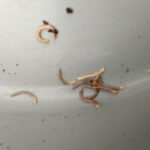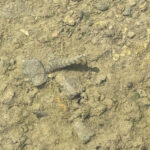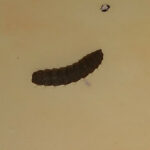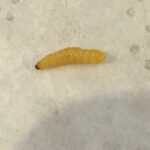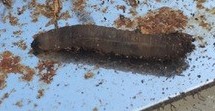The Wooly Worm Festival and Beattyville Car Show take place in the small town of Beattyville Kentucky. The Beattyville Kentucky Car Show features classic autos of all kinds displayed by owners from all over the country. Auto aficionados and novices alike gather here each year to watch the auto parade, eat fun foods, and listen to live music. Another popular part of this event is the wacky and weird wooly worm festival. The wooly worm festival actually takes place in dozens of small towns across the U.S. each year. Locals and visitors alike gather in towns like Beattyville, Kentucky as well as Lewisburg, Pennsylvania each year to find out just how bad the upcoming winter might get. The festival began in 1987 and it occurs during the third weekend in the month of October. During the festival, “worm readers” attempt to gauge the severity or mildness of the upcoming winter by poking and observing the furry Wooly worm.
During most Wooly Worm Festivals (also spelled Woolly Worm Festival) other fun activities take place such as games, arts and crafts, live music, and prize giveaways. For m ore information about the Wooly Worm Festival and Beattyville Car Show visit Kentucky Festivals at www.kyfestivals.com.
About the Wooly Worm
The Wooly worm is actually a caterpillar or the larvae of the Isabella tiger moth. The tiger moth belongs to the arctiidae family, which has 11,000 species of moths around the world. The tiger moth is a beautiful creature with bright colors such as scarlet, yellow, orange, and white and rich hues ranging from black to beige. Equally as bright and beautiful, the Wooly worm may have a burnt orange color in the middle and it may be black on both ends. Some Wooly worms, however, are completely black or completely brown.
Wooly worms may look small, but these dazzling creatures have 13 segments and three sets of legs. They have tiny eyes, but they make their way around mostly by feeling around and touching. Once the Wooly worm has found its home for the winter, it secretes an all-natural and organic antifreeze that protects the interior of its cells. Everything else will freeze, but the Wooly worm will still survive. The antifreeze protects the creature in freezing temperatures that can dip as low as –90 degrees Fahrenheit. The wooly worm is also protected by shelter. It chooses its places to hide wisely. It crawls under logs, boulders, boards, rocks, and other dark places. The Wooly worm will remain in its “frozen” state until May, when it will emerge as a brilliantly colored moth.
Prior to settling in for the winter, the Wooly worm will survive by eating a variety of plants such as cabbage, spinach, grass, and clover. And to protect itself from predators, the Wooly worm will curl up into a ball, exposing only its bristles, which can be quite irritating to the skin.
How the Wooly Worm Predicts the Weather
In some parts of the world, it is believed that the severity of the winter can be predicted by the intensity of the black on the Isabella tiger moth’s larvae (caterpillar). In the American Northeast, it is believed that if the Wooly worm has more brown on its body than black, it will be a fair winter. If the Wooly worm has more black than brown, the winter will be harsh.
The furry Wooly worm can be spotted during the fall months in great numbers inching along the ground. While you will notice them in great numbers during the fall months, the Wooly worm actually has two life cycles, so they can also be found inching around in June and July as well.
Also called the “Wooly Bear Worm” mostly in New England and the Midwestern United States, the Wooly worm has a pretty good weather prediction rate. Scientists would prefer not to acknowledge it, but the Wooly worm has an 80-85% accuracy rate for predicting the weather. The worm has held its record for accuracy for more than 20 years.
If you want to see the Wooly worm in action, don’t seek them out at night. Remember, worms are nocturnal for the most part, not caterpillars. The Wooly worm is very active during the day. It is not uncommon to spot them in groups of hundreds, with one common goal – to find the perfect place to hide.
All About Worms is always free, always reader-supported. Your tips via CashApp, Venmo, or Paypal are appreciated! Receipts will come from ISIPP Publishing.




